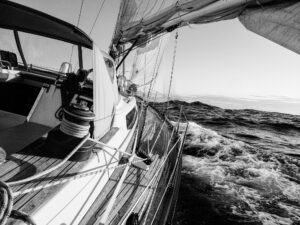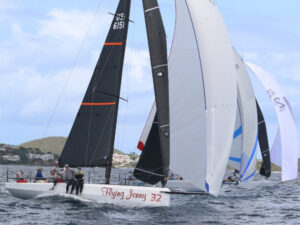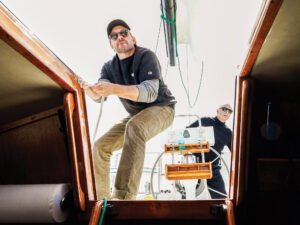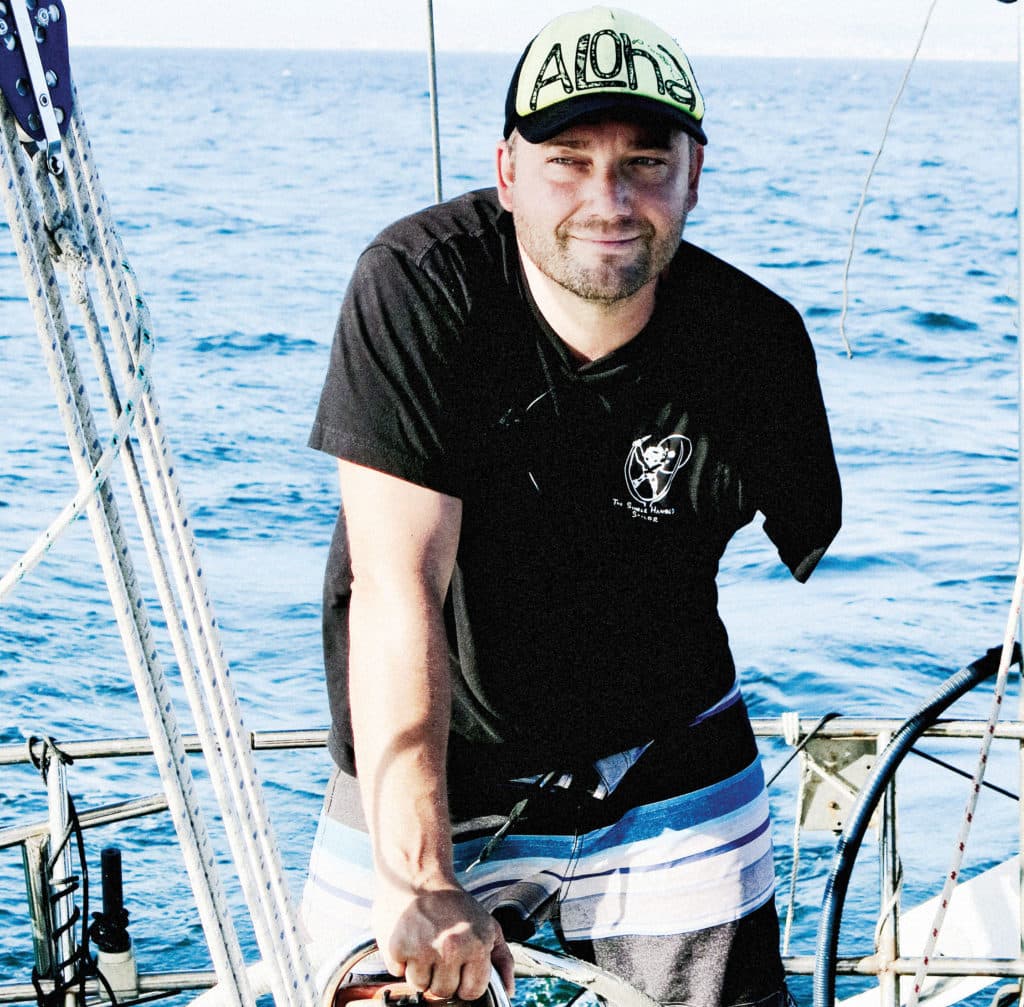
On the evening of October 17, 2008, 30-year-old Dustin Reynolds drove his street bike a short distance from his house on the Big Island of Hawaii to meet with some friends at a local sushi restaurant. After a couple of hours and a good meal, in the early hours of the next morning, Reynolds hopped back on his bike, anticipating an uneventful ride home.
At approximately 1 a.m., a drunk driver in an oncoming pickup truck suddenly swerved into Reynolds’ lane, and despite his quick reflexes and a drastic swerve to the right, the truck hit him with such force that his left arm was ripped off, landing more than 50 feet away. Traumatically injured, he was thrown from the bike, which went into a ditch, and he found himself dazed by the side of the road. He tried to take off his helmet and couldn’t understand why his left arm wasn’t responding.
The enormity of his situation flooded into his consciousness when he reached over and touched his bloody stump and then, with some effort, he pulled out his cellphone to call for help. Suddenly, as the full weight of his situation set in, he stopped to assess things. The driver of the truck had kept going but then swerved off the road into a ditch quite a distance away. There was no sign of movement there. Nobody else was on the road at this time of the night, and he realized this was where he might very well die. He thought about what it would be like to go through life missing an arm and hesitated, but finally called 911.
The ambulance arrived only about six minutes later, and while the paramedics tried to stabilize him, the driver went off searching for the missing limb. After about 20 minutes and with Reynolds’ life fading, they had to abandon the search for his arm and rushed him to the hospital.
In the emergency room, the doctors assessed his situation. In addition to the missing arm and a badly mangled leg, which would require amputation, he had suffered a punctured spleen and lung; his stomach had been forced through his diaphragm; he had aspirated acid into his lungs; he had broken several ribs; and he had numerous other broken bones, plus other unknown internal injuries. A CT scan showed massive internal bleeding, but without exploratory surgery, the doctors couldn’t tell where this was coming from.
Urgent action was required, but before he was taken into surgery, one of the doctors told him that his chances were not very good, and did he want to try surgery, or just spend his final hours with his family and friends who had all arrived and were around him. He told the doctor: “You really shouldn’t be putting this question to me now. I made this choice when I called 911.” Looking up at his tearful girlfriend who had just arrived and was mirroring everyone’s concern, he tried to lighten the moment and said, “Well, if I don’t make it, you’re not getting any tonight.” As he was wheeled away to surgery, he realized that if he did die on the operating table, these would have been his last words.
Amazingly, Reynolds did pull through, and after 17 days in the hospital, and over the next several months of rehabilitation, he eventually managed to get around with a prosthetic leg. And while the remains of his missing arm were too short to allow for a useful prosthetic there, he began to realize that there were still many things he could do, even despite two missing limbs.
With mounting medical bills—and because his small commercial-fishing business and carpet-cleaning company had fallen into shambles during his absence—financial ruin seemed imminent. When his own insurance company sued him for nearly a half million dollars in medical bills, his only option was to declare bankruptcy.
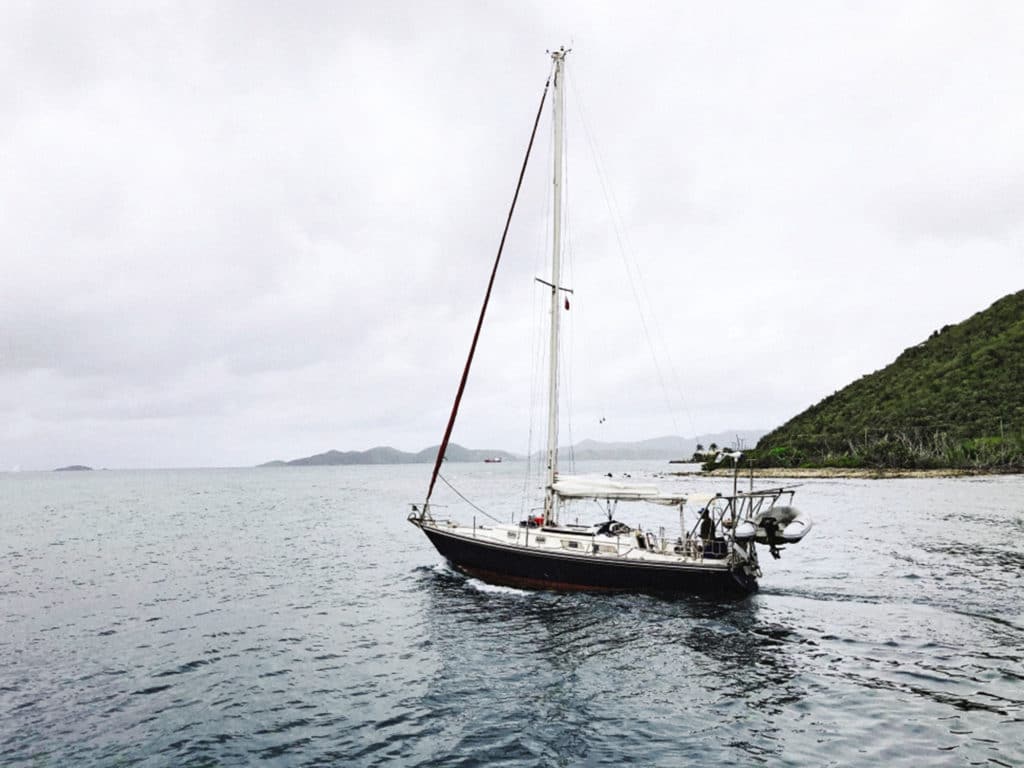
Three years after the accident, Reynolds had neither money nor a job, and was drifting with regard to his purpose and goals for the future. Then, one day while surfing the internet looking for ideas of what to do with his life, he ran across the website for the Joshua Slocum Society—an organization that tracks records for singlehanded sailors, particularly circumnavigators. He discovered that no double amputees were in the record books, and so his new life goal came to be: He would somehow buy a sailboat and sail it around the world.
There were only a couple of problems to overcome: He was nearly broke and didn’t know how to sail.
Somehow, with the sale of his old fishing boat, he came up with just enough money to buy a well-used 1968 Alberg 35 on nearby Oahu. While basically a sound old boat that had recently completed a circumnavigation with its aging owner, it had a tired engine, worn-out sails and many other issues, but it was a good, seaworthy design. Now with a suitable boat, he immersed himself in fixing it up and readying it for extended voyaging. His next hurdle to overcome was to learn how to sail.
Taking lessons was unaffordable and none of his friends were sailors, so he scanned the internet for videos on how to sail. After a few weeks of watching how-to videos on YouTube while he completed repairs and readied his boat with nearly the last of his cash, he provisioned it for the upcoming challenge. He named his boat Rudis, after the wooden sword issued to gladiators while they learned their deadly trade; if they won their freedom, they were allowed to keep their rudis as a symbol of their emancipation. So, with his Rudis, Reynolds set out from the Kona coast of Hawaii to take on the world.
When I first met Reynolds, six months after he’d left Hawaii, he was already in Western Fiji. We had sailed there on our Flying Dutchman 50, Small World II, after a cruise through parts of Kiribati, the Northern Cooks, the Samoas and Tonga, and were there preparing for another season of sailing when we walked past a slip and saw a young man with one leg and one arm swiftly and agilely moving about his boat. I stopped and spoke with him for a bit, and learned that I’d sailed virtually the same somewhat-off-the-beaten-track route across the central Pacific. Later that day, I met up with him at the sunset bar on the point in Vuda Marina and learned a little more of his story. Over the next couple of weeks, I saw Reynolds often. We became Facebook friends and ultimately went our separate ways.
We kept in touch online, and I learned that he had gotten as far as Thailand. Upon reaching this milestone, Reynolds was tired. He had been without a reliable engine since Fiji, had just spent 24 days on a 900-nautical-mile nearly windless passage, and his aging Alberg needed a big influx of money to keep going—more than it was worth. He seriously considered giving up, but some of his friends convinced him to try a crowdfunding campaign.
This was difficult for Reynolds. He’s not the type to ask for help, and yet he finally did put up a GoFundMe page, and within a couple of weeks managed to raise $20,000, which, along with some money from the sale of his well-worn Alberg, was enough to buy a bargain-priced Bristol 35.5. This new vessel was named Tiama, which the previous owner told him meant “freedom” in one of the Polynesian dialects. With this vessel he was able to continue his way around the world.
In 2018 and 2019, he crossed the Indian Ocean with stops at Sri Lanka, the Chagos archipelago, Madagascar, Mozambique and South Africa. As his travels continued, he was met by many welcoming sailors and yacht clubs, some of whom provided sponsored dockage and assistance with his repairs.
Beginning in Thailand and continuing on his westward voyage, he’d begun to feel the effects of the enormous amount of goodwill and camaraderie within the world-cruising community. As his journey has continued, he told me he has been more and more impressed with how cruising sailors share and help each other out. After his crossing from Chagos to Madagascar, he ended up in a bay with about 22 other boats, 20 of which he knew from previous months and years. On what was the 10th anniversary of his debilitating accident, the cruisers in the bay threw a party for him on the beach. By the time Reynolds had reached Cape Town, South Africa, his reputation had preceded him, and he was hosted by the Royal Cape Yacht Club, where he was awarded the prestigious Ocean Cruising Club Seamanship Award.
Several months later, he’d made the 5,000-nautical-mile crossing to the Caribbean, with stops at most of the islands in the chain from Grenada northward. I finally caught up with Reynolds again at Nanny Cay Marina on Tortola, where they were hosting him for his time in the British Virgin Islands. He gave a well-attended, inspirational talk for local sailors and was interviewed there by a West Coast sailing magazine. Another presentation at the posh Oil Nut Bay Resort on Virgin Gorda brought donations and a future yacht-delivery job.
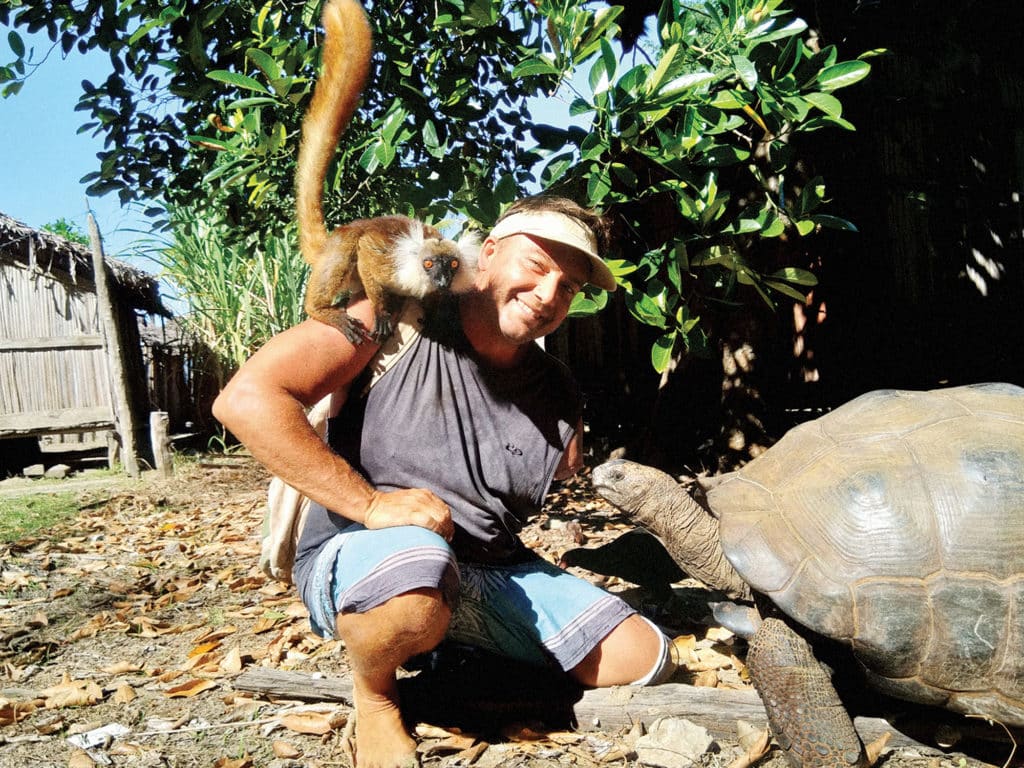
When I asked him what the high and low points of his travels had been, he told me about the time he was boarded in the Solomon Islands at night and scared off the boarders with a bright light and by telling them he had a gun (he didn’t). He spoke of breaking off his self-steering rudder just after leaving Niuatoputapu in Tonga and how he had to fashion a new rudder blade out of an old oar that actually served him well all the way to Thailand. He said he’d had persistent engine problems and was becalmed for many days in the area around Sumatra. He recounted losing his prosthetic leg overboard and trying to fashion a homemade one out of several broken parts.
But he also spoke of high points, such as being welcomed by a village chief and his family in Vanuatu; swimming with whale sharks while his boat drifted at sea; being immersed in village life in Indonesia; hiking the mountains of Dominica; freediving in Chagos; and barter trading with locals at small villages along the coast of Madagascar, where money was of no value.
While in Thailand he had met a sailor who hoped to do a documented voyage to Antarctica. So, upon reaching South Africa, with help from the Zululand Yacht Club, Reynolds flew to Puerto Williams, Chile, and joined a documentary filmmaker, the sailor and one other crew aboard his friend’s 38-foot Dudley Dix-designed cutter for a voyage to the Antarctic Peninsula, which whetted his appetite for future high-latitude sailing. His perfect 24-day passage from Ascension Island to Grenada was another high point of what has become an epic adventure.
In our lives, we are seldom given the opportunity to meet an extraordinary person, and for me meeting Dustin Reynolds certainly falls into that category. He has so far traversed approximately 30,000 nautical miles and has sailed through some of the most challenging areas of the world, all literally singlehanded and with virtually no outside assistance. His upbeat and optimistic personality is magnetic and energizing, and his endeavor is an inspiration for almost anyone who dreams of doing extraordinary things but might be apprehensive about trying.
After sailing to New England, where he spent the summer, his current plans are to sail south to visit Puerto Rico and the Dominican Republic, and then to carry on to Colombia and the San Blas Islands of Panama before transiting the Panama Canal, with an eventual return to his home waters of Hawaii via French Polynesia. Reynolds has been offered a captain’s job for a Greenland expedition in the coming year and sees his future tied to the sea. Sailing around the world started out as a way to establish a goal and to succeed, but over time, the people he has met and places he has visited within the cruising world have become the rewards in and of themselves for his efforts.
Voyager, adventurer and writer Todd Duff is a frequent contributor to Cruising World.

